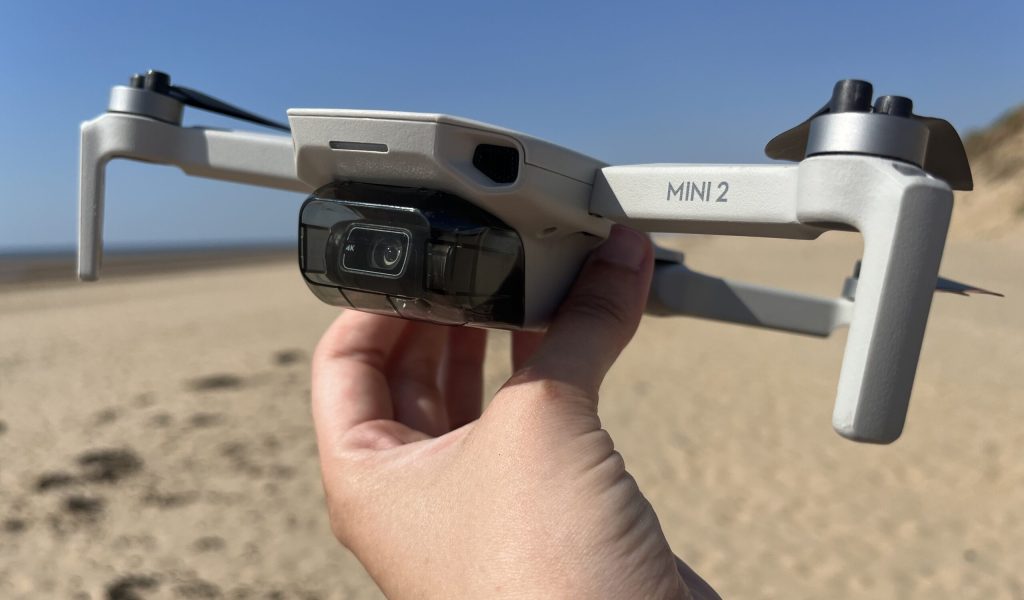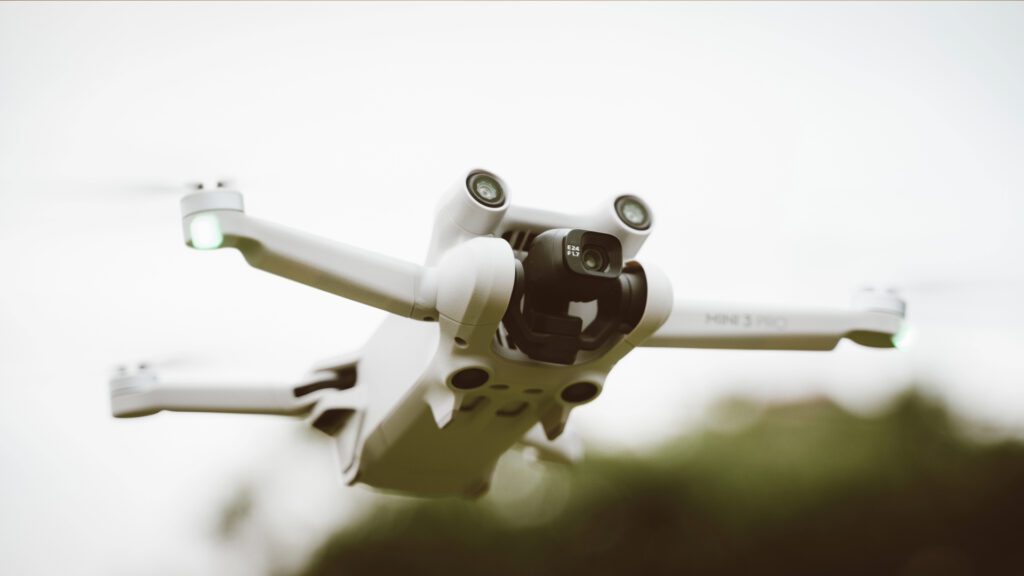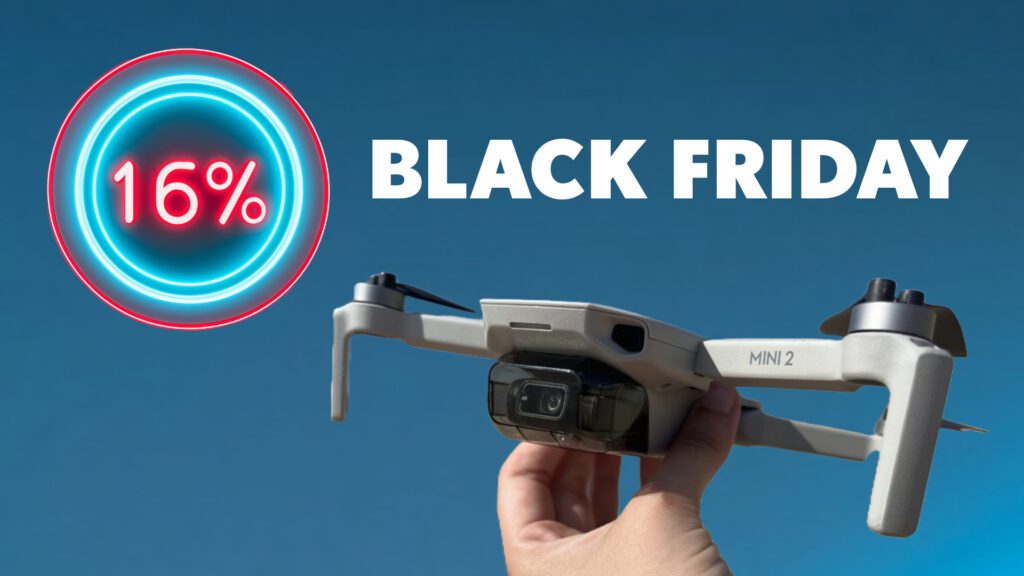Embarking on a new venture or hobby often stirs up a sense of anxiety and unease, and the world of droning is certainly no exception.
Whether it’s the fear of crashing, losing control, or stares from others around you, drone anxiety can hinder the enjoyment of this fascinating hobby. This guide will run through potential causes of drone anxiety, the impact it can have on flying your drone, and tips to minimise the fear and get you outdoors enjoying this unique hobby!
Understanding drone anxiety and its impact on flying
First and foremost, what is drone anxiety?
Well, if you’re reading this, you’ve probably guessed what it is or at least experienced it before!
Drone anxiety is the feeling of unease or nervousness experienced by drone pilots when flying their drones. The feeling can commonly arise due to fear of crashing the drone, violating regulations or worrying about how it looks to others.
The impact of drone anxiety on flying can be significant as it can hinder the pilot’s confidence, affect their decision-making abilities, and even lead to avoidance of flying altogether. Overcoming drone anxiety is crucial for enjoying the full potential of drone flying and exploring the exciting world of aerial photography and videography.
Understanding the causes and addressing drone anxiety is essential to help individuals overcome their fears, build confidence, and fully embrace the thrilling experience of flying drones. By implementing strategies and techniques to reduce anxiety, drone enthusiasts can unlock the full potential of their drones and engage in joyful and rewarding flights.
So if you’ve ever experienced drone anxiety or it’s stopping you from starting your drone hobby altogether, then this is the guide for you!
Check out the best drone for beginners.
Overcoming fear of flying drones: Practical tips
Now we’ll discover a range of tips that will help you build confidence in your piloting skills and help you overcome drone anxiety.
Prepare to minimise uncertainty
The art of preparation before going out to drone can help to minimise uncertainty and thus, lower drone anxiety.
One valuable tool that can help you better prepare before going out to fly is Google Maps.
With the 3D view feature in Google Maps, you can scope potential drone locations near to you and get a birds-eye perspective of the area. This allows you to familiarise yourself with the surroundings before you even set foot outside. You can scout for potential obstacles, identify open spaces for takeoff and landing, and get a sense of the overall terrain and airspace.
You also have the time beforehand to note down and list particular drone shots you may want to try before heading out so that when you are out flying the drone, you won’t have to think about what shots to capture.
And let’s not forget about parking! Google Maps lets you check out nearby parking spots, so you’ll have an idea where you can easily park up and get flying.
Take someone with you
One of the problems with starting a new hobby outdoors can be the curious looks and potential stares from the public. It’s a situation we can all relate to and one I’ve personally encountered with drone flying.
As you may know with the DJI Mini 2, it can sound like a swarm of a thousand bees during take-off – how are people not supposed to look?
Having someone accompany me for my first few flights helped me get over the barrier of other people’s gazes. If anything, it gave something for parents and their children to look at whilst on their afternoon walks. It also just helped for moral support, I was less worried about crashing in front of people and more focused on just the fun of flying.
For one, people are less likely to “find it weird” or approach you if you’re with another person (that is if you’re not standing around suspiciously wearing balaclavas). Another person can also lend a second pair of eyes to navigate potential obstacles or hazards whilst in the air, whilst you can focus on practising flying the drone.
It’s important to remember that most people are more intrigued than they are angry. In my hometown, seeing a drone is a whole new experience and not something they would come across every day.
Additionally, when it comes to people watching you, having a companion can act as a buffer. They can help communicate with bystanders, answer questions, and create a friendly atmosphere, which can be a bit more difficult if it’s just you flying the drone by yourself.
Pick a good time of day
Choosing the right time of day can greatly alleviate drone anxiety and enhance your flying experience. For instance, less people are around earlier times in the morning or later in the evenings (depending on the weather), as well as on weekdays over weekends.
Additionally, opting for favourable weather conditions – such as calm winds and clear skies – can provide a sense of ease. You can fly your drone without concerns about wind or rain interference. Alleviate your worries by limiting the amount that you encounter.
By strategically planning your flights during quieter times, you can focus more on enjoying the freedom of flight and capturing breathtaking aerial footage without unnecessary distractions or anxiety-inducing factors.
Wear a High Visibility (Hi-Vis) Jacket
Now, hear me out first!
This option may seem counterintuitive as it brings more eyes to you. But in doing so, it gives off a vibe that you mean business and you’re using the drone for work or professional purposes.
People are less likely to come up to you and interrupt someone conducting work. It’s almost as if people respect you more.
It doesn’t have to be a big, neon overcoat. It can be a light vest you throw over your outfit, or a high-vis hoodie. This is the lightest and most suitable vest we recommend: Hycoprot High Visibility Safety Vest
Lightweight and durable high visibility jacket. Available in many colours and sizes, this unisex jacket comes with five pockets to carry all your essentials.
Bring a Landing Mat
We know wearing high vis may not be for everyone… a landing mat can also do the trick.
When you set up your landing mat and your drone, it sends a message of professionalism. Plus, it acts like a little “keep clear” sign, so people know to give you some space and not get in your way.
Here’s a drone landing mat we recommend: SKYREAT Drone Landing Pad
Weighted drone landing pad that provides stability in a range of windy weather conditions. A mat that will ensure a safe and reliable take-off and landing spot for your drone. Double-sided for lighter and darker applications.
Building confidence and skills in drone piloting
Whilst the tips above will help you tackle your drone anxiety to an extent, it is equally important to focus on developing the necessary piloting skills and knowledge that will enable you to completely overcome drone-related anxieties.
Educating yourself about drone technology and safety
When it comes to overcoming drone anxiety and becoming a skilled drone pilot, educating yourself about drone technology and safety plays a crucial role.
By delving into the world of drones, understanding their components, and familiarising yourself with the latest advancements, you can boost your confidence and make informed decisions during flight.
Regional and local regulatory guidelines are a good place to start. There’s nothing worse than planning a location/landmark to drone only to find that the area has enforced airspace restrictions, forbidding you to take off with your drone. The same goes for regional regulations, it’s worth understanding height, distance and legal restrictions before you take flight. By doing so, you can ensure that you operate your drone responsibly and fly with a greater sense of assurance.
Remember, knowledge is power, and the more you educate yourself about drone technology and safety, the more confident and competent you will become as a drone pilot.
Check out rules for flying drones in the UK.
Pre-flight preparations to ease anxiety and ensure safety
Before taking to the skies with your drone, engaging in pre-flight preparations can significantly reduce anxiety and enhance safety during your drone piloting journey.
Get into the habit of inspecting your drone and propellers before every flight, checking for any signs of damage or wear. Also, ensure that the batteries are fully charged and securely attached. Don’t forget to regularly update your drone’s firmware to benefit from the most recent features and enhancements available.
Once completed and you’ve connected the remote controller with the drone, the app notifies you at the top of the screen if there are any issues prior to take off. This could be from a stuck gimbal to a GPS signal issue, so you’re made aware of any potential implications.
In addition to these preparations, it’s crucial to familiarise yourself with emergency landing procedures. Understanding how to initiate an emergency landing in case of unexpected circumstances such as loss of signal or low battery can help you if you ever encounter unexpected circumstances.
On the settings menu for the DJI Mini 2, you can select what you would like your drone to do in the case of signal loss. So, if the battery of your phone was to die or your GPS signal is lost, your drone will either hover, land or return to home, depending on the option you select. These settings will help you know what your drone will do in unprecedented circumstances.
By incorporating these practices into your pre-flight checklist, you can enhance the safety and performance of your drone while minimising the risk of any unforeseen issues during your flights. These steps will not only alleviate anxiety but also ensure the safety and success of your drone flights.
Mastering flight techniques for greater confidence
Knowing the basics means there are no questions when you take your drone to the skies.
Investing time in learning the fundamental principles of drone flight, such as the sensitivity of the thumbsticks, manoeuvring, and orientation, will help you earn a sense of control and mastery over the aircraft. Doing so in safe and quiet environments will not only relieve you of certain drone anxiety but will also build your confidence in piloting your drone.
For instance, the DJI Mini 2 has a flight tutorial that can help you get a grasp of the basics when you first start flying, such as taking off and landing.
As your skills progress, the more comfortable and confident you will become in navigating various flight scenarios, mitigating potential risks, and maintaining smooth and stable flights.
Check out more drone flying tips.
Joining Drone Communities and Seeking Support
Joining drone communities can be a valuable step in reducing drone anxiety and gaining confidence in your flying endeavours.
By connecting with other drone enthusiasts who share your passion, you can tap into a wealth of knowledge and experience from the experts. Asking questions and sharing experiences with like-minded individuals will allow you to gain insights and may alleviate any drone-related anxieties. Whether it’s through online forums like Reddit, social media groups on Facebook, or local drone clubs, these communities offer a sense of belonging and support that can greatly enhance your drone-flying journey.
Additionally, being part of a drone community allows you to stay updated with the latest developments in the industry, such as new regulations, technology advancements, and creative trends. This knowledge not only empowers you as a drone pilot but also provides a sense of preparedness and awareness in a constantly changing field.
With patience, knowledge and practice, you can overcome flying drone anxiety and discover the excitement that drone flying can offer.
FAQs: How To Handle Drone Anxiety
What is drone anxiety, and why do people experience it?
Drone anxiety refers to the feelings of unease, nervousness, or fear that some individuals experience when flying a drone. The causes can source anywhere from worry about crashing or damaging the drone, to fear of public scrutiny, or concerns about violating privacy or legal regulations.
The causes can stem anywhere from a fear of technology or a general lack of familiarity, to the fear of being judged by others when flying drones. For example, the sound and appearance of drones can evoke anxiety, particularly when flying in public spaces. Additionally, concerns about the potential consequences of mishandling a drone, such as accidents or legal issues, or the fear of losing control or damaging expensive equipment can also be a source of anxiety.
Are there any specific techniques to calm anxiety during drone flights?
Yes, there are several techniques that can help calm anxiety during drone flights:
- Deep breathing exercises: Practice deep breathing techniques to regulate your breathing and allow a sense of calmness. This will help to reduce the anxious feelings.
- Drone in familiar surroundings: Begin by flying your drone in familiar and open spaces where you feel comfortable. This could be a local location to you, such as a park. Gradually expand your flying locations as you gain more confidence.
- Take someone with you: Having a friend or companion with you during drone flights can provide support and help you gain confidence, if flying your drone in certain places is outside your comfort zone.
- Take breaks and relax: If you feel overwhelmed or anxious during a flight, try to take regular breaks and don’t overwhelm yourself.
How can I build confidence in piloting drones and overcome fear?
- Start with beginner-friendly drones: Begin your drone piloting journey with a user-friendly and stable drone model, such as the DJI Mini 2. These drones are designed for beginners and offer user-friendly controls, making it easier to learn the basics of flight.
- Learn the basics: Take the time to understand the basics of drone flight, such as throttle control, yaw, pitch, and roll. Familiarise yourself with the drone’s control modes and intelligent flight controls to gain confidence in manoeuvring.
- Practice regularly: Consistent practice is key to improving your piloting skills and building confidence. Putting yourself outside your comfort zone and working on your piloting techniques is the best way to improve your skills and confidence.
- Practice with a simulator: Drone simulators are a great way to practice piloting a drone in a virtual environment. By practising flying in a virtual environment, you can gain confidence and skills without the risk of damaging your drone.
- Seek support and guidance: Connect with experienced drone pilots or join online communities where you can share your concerns and seek advice. Learning from others’ experiences can provide a communal space for insights and support.






